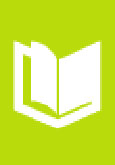DOI:
http://dx.doi.org/10.1016/bs.agron.2015.02.002Altmetric score:
Dimensions Citation Count:
Publication year
2015
Authors
Nocita, M.; Stevens, A.; van, Wesemael.B.; Aitkenhead, M.; Bachmann, M.; Barths, B.; Dor, E.B.; Brown, D.J.; Clairotte, M.; Csorba, A.; Dardenne, P.; Dematt, J.A.M.; Genot, V.; Guerrero, C.; Knadel, M.; Montanarella, L.; Noon, C.; Ramirez-Lopez, L.; Robertson, J.; Sakai, H.; Soriano-Disla, J.M.; Stenberg, B.; Vargas, R.; Wetterlind, J.; Shepherd, K.D.; Towett, E.K.
Keywords
Soil properties, Soil science, Soil spectroscopy, Food security























